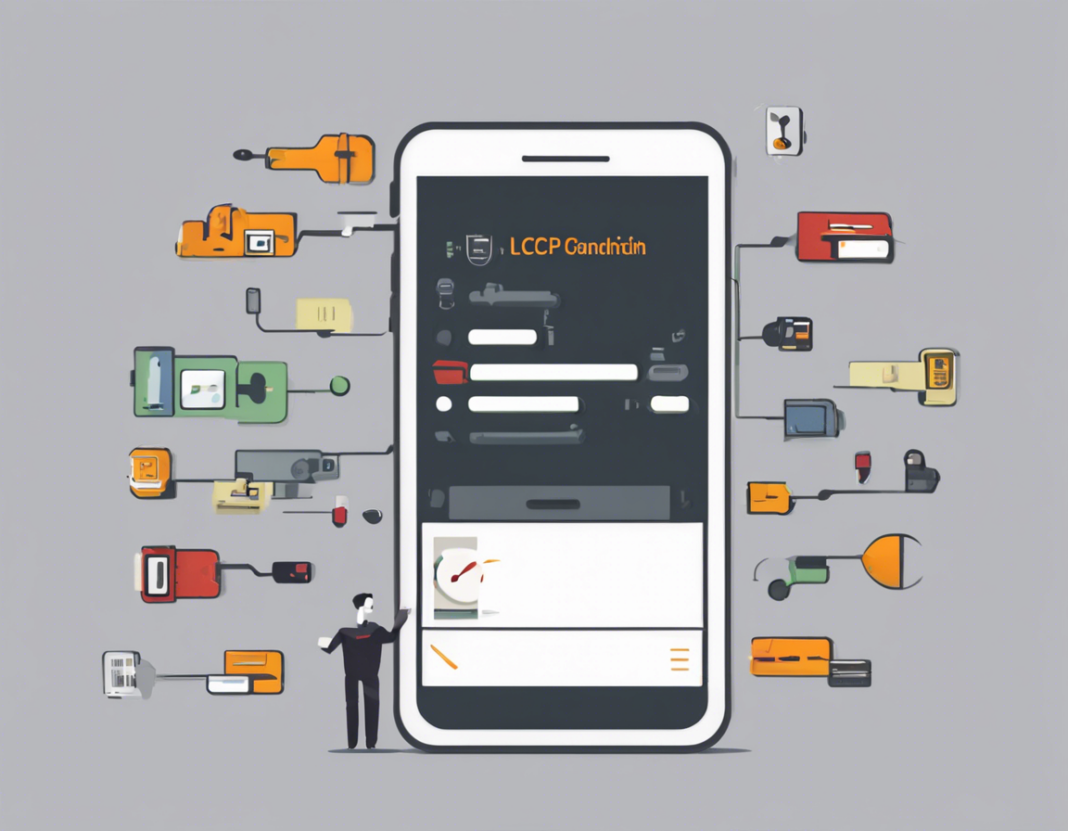In the realm of website performance, one crucial aspect that webmasters need to pay attention to is the page loading speed, particularly the Largest Contentful Paint (LCP) metric. LCP is a user-centric metric that measures how long it takes for the main content of a webpage to load. A fast LCP contributes significantly to a positive user experience, while a slow LCP can lead to user frustration and potentially high bounce rates. When it comes to mobile users, the importance of a fast-loading website is even more pronounced. Research indicates that mobile users are more likely to abandon a slow-loading website compared to desktop users.
If you are encountering issues with your LCP on mobile devices, particularly if it is longer than 4 seconds, it is critical to address these issues promptly to enhance user experience, improve search engine rankings, and potentially increase conversion rates. In this comprehensive guide, we will delve into the causes of a slow LCP on mobile devices and provide actionable solutions to troubleshoot and improve this critical performance metric.
Understanding LCP on Mobile Devices
Before we delve into troubleshooting tips, let’s understand what LCP is and why it is crucial for mobile performance optimization.
What is Largest Contentful Paint (LCP)?
Largest Contentful Paint (LCP) is a user-centric metric that measures the loading performance of a webpage. It specifically focuses on the time taken for the largest content element within the viewport to become visible to the user.
Why is LCP Important on Mobile Devices?
Mobile users have unique browsing habits and higher expectations when it comes to page loading speed. A fast LCP on mobile devices is crucial for providing a seamless user experience and retaining visitors on your site.
Common Causes of Slow LCP on Mobile Devices
Several factors can contribute to a slow LCP on mobile devices. Identifying these underlying issues is the first step towards improving this critical performance metric.
1. Large Image and Video Files
Images and videos that are not optimized for the web can significantly slow down the loading speed of a webpage on mobile devices.
2. Render-Blocking Resources
CSS and JavaScript resources that block the rendering of the page can delay the LCP on mobile devices.
3. Slow Server Response Time
A slow server response time can lead to delays in fetching the necessary resources, thereby increasing the LCP on mobile devices.
4. Third-Party Scripts
Excessive third-party scripts, such as ads, social media plugins, and analytics trackers, can impact the loading speed of a webpage on mobile devices.
Troubleshooting Slow LCP on Mobile Devices
Now that we have identified some common causes of slow LCP on mobile devices let’s explore actionable strategies to troubleshoot and improve this performance metric.
1. Optimize Images and Videos
- Compress images using tools like ImageOptim or TinyPNG to reduce their file size without compromising quality.
- Serve responsive images using the
srcsetattribute to ensure that mobile devices receive appropriately sized images.
2. Minimize Render-Blocking Resources
- Minify and concatenate CSS and JavaScript files to reduce the number of render-blocking resources.
- Load critical CSS inline and defer non-critical CSS to improve page rendering.
3. Improve Server Response Time
- Utilize a Content Delivery Network (CDN) to cache assets closer to the user and reduce server response time.
- Optimize server configurations and consider upgrading hosting plans for faster response times.
4. Evaluate and Limit Third-Party Scripts
- Conduct an audit of third-party scripts and remove any that are unnecessary or unused.
- Asynchronously load non-essential scripts to prevent them from blocking the page rendering process.
5. Implement Lazy Loading
- Implement lazy loading for images and videos to defer their loading until they enter the viewport, reducing the initial page load time.
- Consider lazy loading offscreen iframes and scripts to further optimize page speed.
6. Prioritize Above-the-Fold Content
- Optimize the critical above-the-fold content to ensure it loads quickly, even if other page elements are delayed.
- Load above-the-fold CSS and JavaScript first to prioritize the display of essential content on mobile devices.
7. Monitor and Test Performance
- Use tools like Google PageSpeed Insights, Lighthouse, and WebPageTest to analyze performance metrics and identify areas for improvement.
- Regularly test your website’s performance on various mobile devices and networks to ensure consistent loading times.
By implementing these troubleshooting strategies, you can effectively improve the LCP on mobile devices, enhance user experience, and boost the overall performance of your website.
Frequently Asked Questions (FAQs)
1. What is a good LCP score for mobile devices?
A good LCP score for mobile devices is typically under 2.5 seconds. However, aiming for an LCP of under 1.5 seconds is considered excellent for optimal user experience.
2. Can a slow LCP on mobile devices impact SEO rankings?
Yes, a slow LCP on mobile devices can negatively impact your website’s SEO rankings. Search engines like Google consider page speed as a ranking factor, especially for mobile search results.
3. How can I measure LCP on mobile devices?
You can measure LCP on mobile devices using various tools like Google PageSpeed Insights, Chrome DevTools, and Lighthouse. These tools provide detailed performance reports, including LCP metrics.
4. Does browser caching affect LCP on mobile devices?
Browser caching can improve overall page speed by storing static assets locally on the user’s device. This can indirectly impact LCP by reducing the time needed to fetch resources on subsequent visits.
5. Should I prioritize LCP over other performance metrics on mobile devices?
While LCP is crucial for user experience, it is essential to consider other performance metrics like First Contentful Paint (FCP), Time to Interactive (TTI), and Cumulative Layout Shift (CLS) for a comprehensive optimization strategy.
In conclusion, optimizing the LCP on mobile devices is paramount for providing a fast and seamless user experience. By addressing common causes of slow LCP, implementing troubleshooting strategies, and regularly monitoring performance metrics, you can significantly improve the loading speed of your website on mobile devices and enhance user satisfaction.
